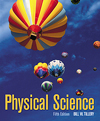The central idea of plate tectonics, which was discussed in the previous
chapter, is that the earth's surface is made up of rigid plates that are moving
slowly across the surface. Since the plates and the continents riding on them
are in constant motion, any given map of the world is only a snapshot that shows
the relative positions of the continents at a given time. The continents occupied
different positions in the distant past. They will occupy different positions
in the distant future. The surface of the earth, which seems so solid and stationary,
is in fact mobile and moving. Plate tectonics has changed the accepted way of thinking about the solid,
stationary nature of earth's surface and ideas about the permanence of the surface
as well. The surface of the earth is no longer viewed as having a permanent
nature, but is understood to be involved in an ongoing cycle of destruction
and renewal. Old crust is destroyed as it is plowed back into the mantle through
subduction, becoming mixed with the mantle. New crust is created as molten materials
move from the mantle through seafloor spreading and volcanoes. Over time, much
of the crust must cycle into and out of the mantle. The mantle-crust cycle is but one of many cycles involving earth materials.
Crust exposed to the atmosphere is involved in another kind of cycle that was
introduced in the previous chapter as the rock cycle. The atmosphere and rocks
of the crust interact, and rocks are weathered to sediments, which are buried
and formed into sedimentary rock. Metamorphosis or melting may take place as
forces from the movement of plates deform and elevate rocks into mountains.
Here, they are weathered to sediments and the rock cycling process begins again. The movement of plates, the crust-mantle cycle, and the igneous-sedimentary-metamorphic
rock cycle all combine to produce a constantly changing surface. There are basically
two types of surface changes: (1) changes that originate within the earth,
resulting in a building up of the surface (Figure 21.1), and (2) changes
that result from rocks being exposed to the atmosphere and water, resulting
in a sculpturing and tearing down of the surface. This chapter is about the
building up of the land. The concepts of this chapter will provide you with
something far more interesting about the earth's surface than the scenic aspect.
The existence of different features (such as mountains, folded hills, islands)
and the occurrence of certain events (such as earthquakes, volcanoes, faulting)
are all related. The related features and events also have a story to tell about
the earth's past, a story about the here and now, and yet another story about
the future. |



 2002 McGraw-Hill Higher Education
2002 McGraw-Hill Higher Education